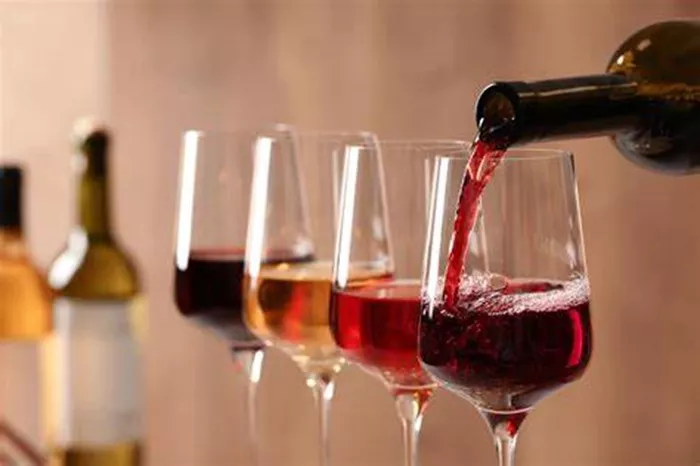Champagne exports experienced significant declines in 2024, with both European Union (EU) and non-EU markets seeing reduced sales. EU sales dropped by 12.7%, reflecting a loss of 7.3 million bottles, while sales to non-EU markets fell by 9.7%, equating to an 11 million bottle reduction.
Earlier this month, the Comité Champagne (CIVC) revealed value and volume figures for Champagne exports. Unsurprisingly, sales in eight of the top ten markets saw declines in both value and volume. However, notable exceptions included the US, which retained its position as Champagne’s largest export market, and the UAE, which surpassed Sweden to take the tenth spot.
The US remains Champagne’s largest export market, with 27.4 million bottles shipped there in 2024, up by 500,000 bottles from the previous year. The value of the US Champagne market is estimated at $885 million, an increase of $11 million compared to 2023. Despite the higher volume and value, the average bottle price has dropped from $33.57 to $32.17. This decrease may indicate a reduction in sales of premium cuvées or a lower cost per bottle for non-vintage wines.
Further analysis of US import data, including re-imports, revealed an even more striking decline in price. According to US customs data, the average price per bottle entering the US fell from $50.20 in 2023 to $44.26 in 2024. While the volume of Champagne imports increased by 1.4 million bottles, from 34.2 million in 2023 to 35.6 million in 2024, the value dropped by $139 million, from $1.718 billion to $1.579 billion.
The drop in value is partly attributed to the high-value re-exported bottles, which have a significantly higher price point than those shipped directly from Champagne. These bottles, likely prestige cuvées, saw their average price drop from $115.50 in 2023 to $84.60 in 2024. While direct Champagne sales to the US are still well below 2021 and 2022 levels, the overall trend shows a decline in both volume and value since the market peaked in 2021.
Concerns have mounted over the potential impact of a 200% tariff proposed by the Trump administration. If implemented, the tariff would increase the average price of a bottle by about $65 for direct imports and $168 for re-imported bottles, likely leading to a sharp drop in imports due to the volatile US market. The US market represents 9.9% of total Champagne volume sales and 17.9% of total export sales, meaning the tariff could have a significant ripple effect on Champagne exports.
For US-based Champagne consumers, there is a silver lining: Stock levels remain healthy. According to the Wine & Spirits Wholesalers of America (WSWA), actual Champagne sales in the US declined by 10% in 2024, indicating an increase in stock levels.
In contrast, Champagne’s performance in other key markets was notably grim. The UK, Champagne’s second-largest export market, saw a 12.7% decline in volume sales, a reduction of 2.2 million bottles. Since 2021, UK sales have fallen by 25%. Japan, the third-largest market, experienced a drop of 18.6%, returning to levels seen in 2017, while sales in Italy and Germany fell by 18.6% and 15.4%, respectively. Australia recorded a 17.6% loss in volume, marking a 28% decline since 2022.
Other European markets also saw losses, with Belgium down by 5.2%, Switzerland and Spain facing declines of 20% and 25%, respectively, and Sweden dropping out of the top ten export markets due to a decline of 11.6%. The UAE, on the other hand, posted a rare growth of 21.6%, with sales increasing by 600,000 bottles to 3.4 million.
In France, Champagne’s home market, sales continued their steady decline, falling by 7.1% in 2024. Over the past 15 years, French sales have dropped by 34%, with no signs of recovery in sight.
These struggles for Champagne stand in stark contrast to the soaring exports of Prosecco, which hit a new record of 660 million bottles. Prosecco’s popularity, particularly in the US, may have contributed to Champagne’s declining sales.
The most recent sales figures from February 2025 show that the decline continues, with Champagne exports down by 8.6% year-on-year. This drop was primarily driven by a 13.1% decrease in French sales, while exports saw a 5.7% reduction. Despite a slight 1.3% increase in January exports, the overall trend points to continued challenges for Champagne.
The sharp decline in Champagne sales reflects a broader trend of shifting consumer preferences in the sparkling wine market, with Prosecco and other alternatives making significant inroads. By the end of February 2025, Champagne’s moving annual target had decreased by 1.7 million bottles, further signaling the industry’s ongoing struggle to retain its dominant position in the global sparkling wine landscape.
You Might Be Interested In:


